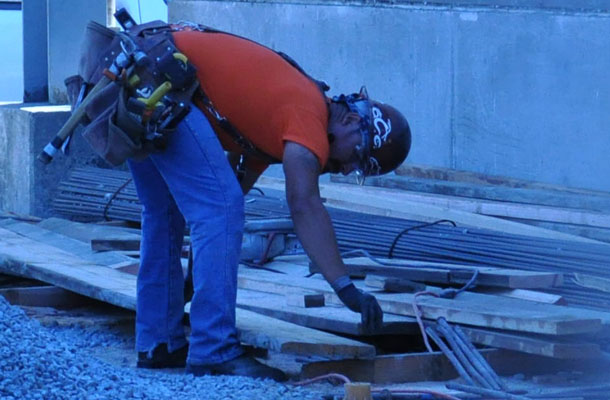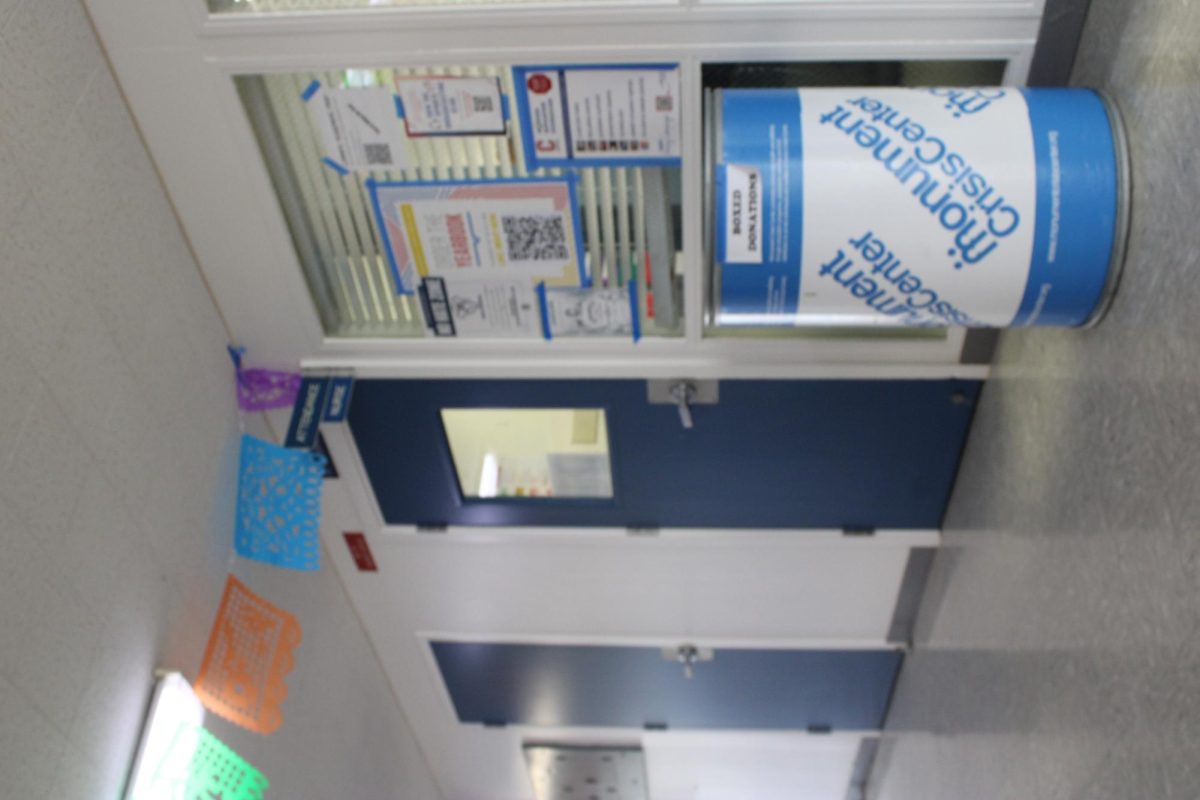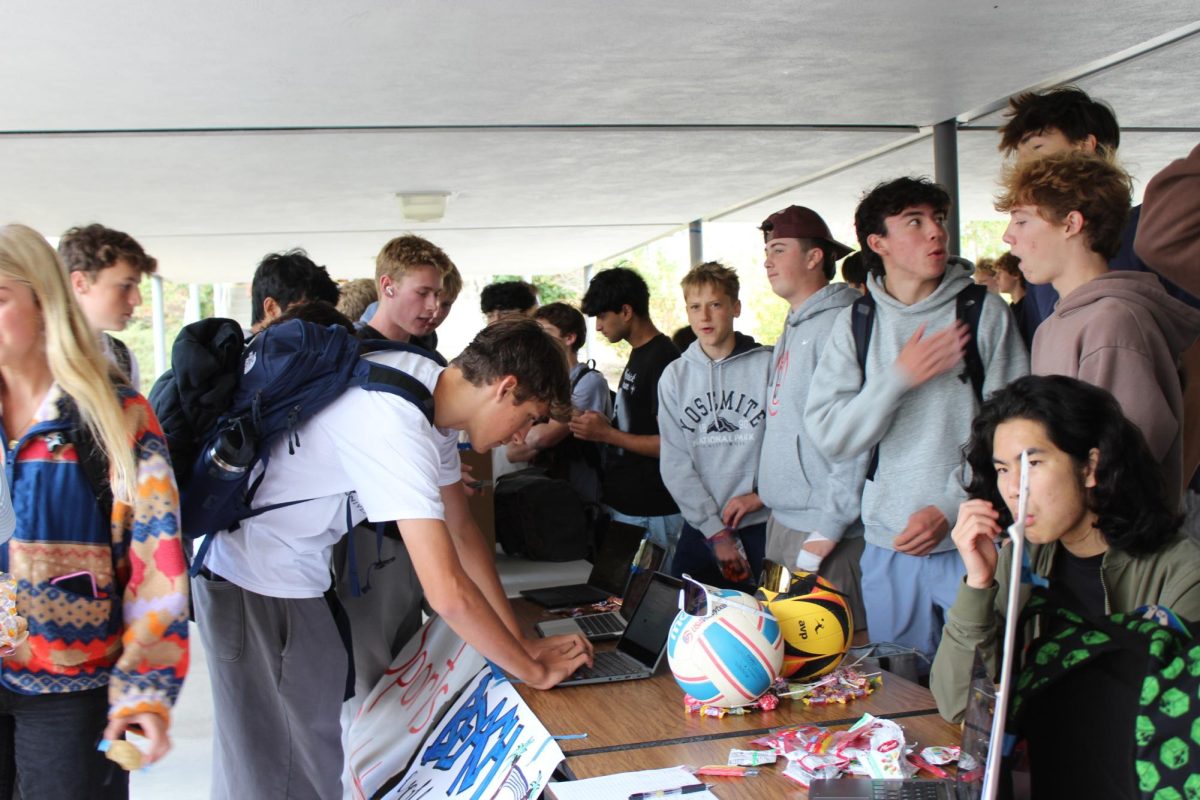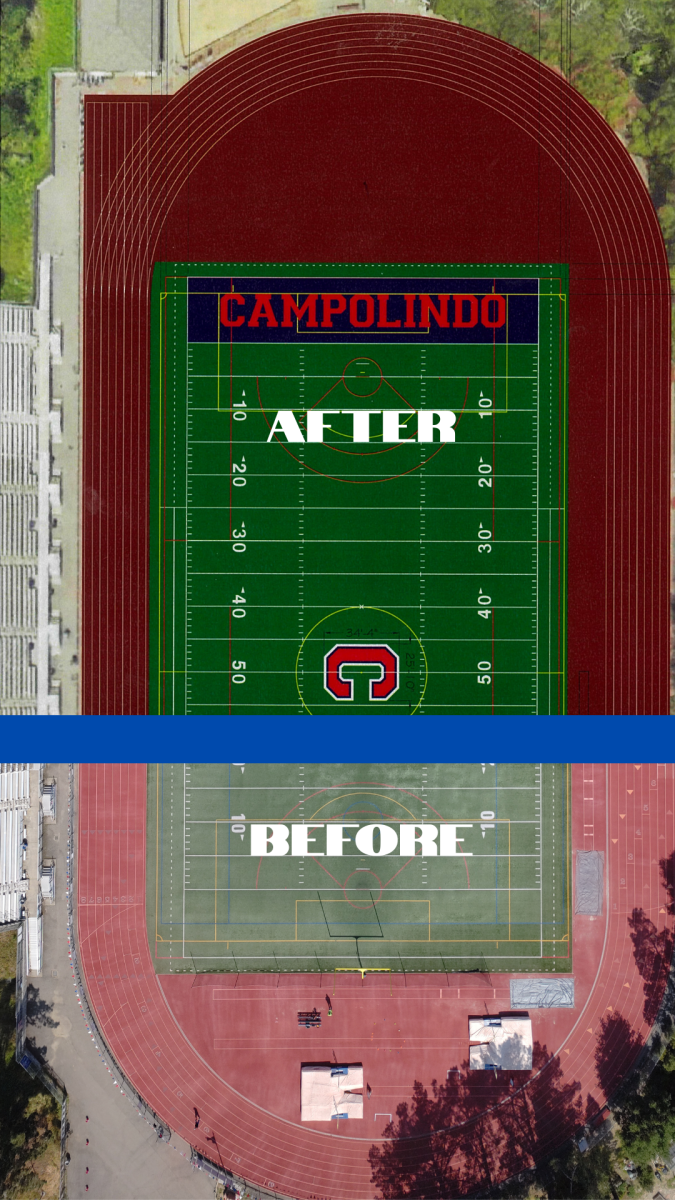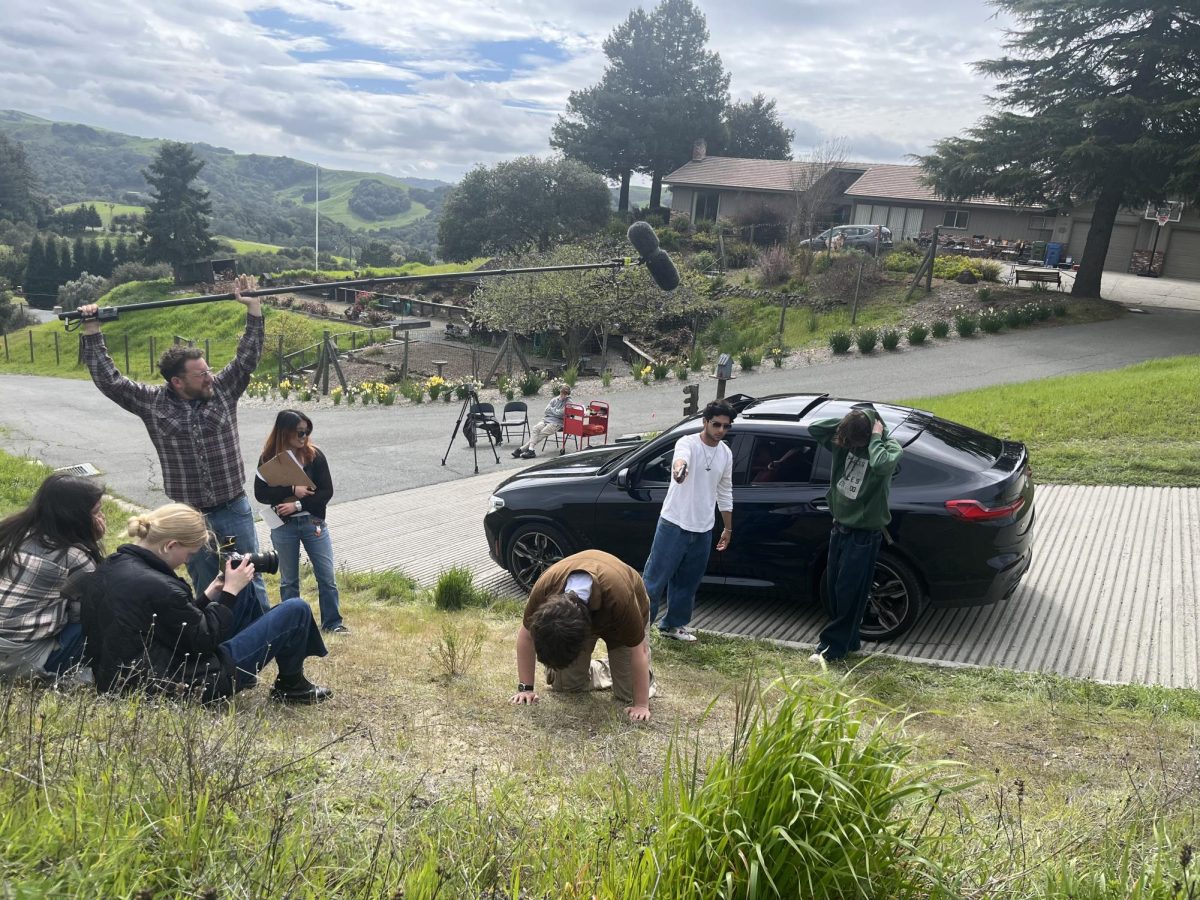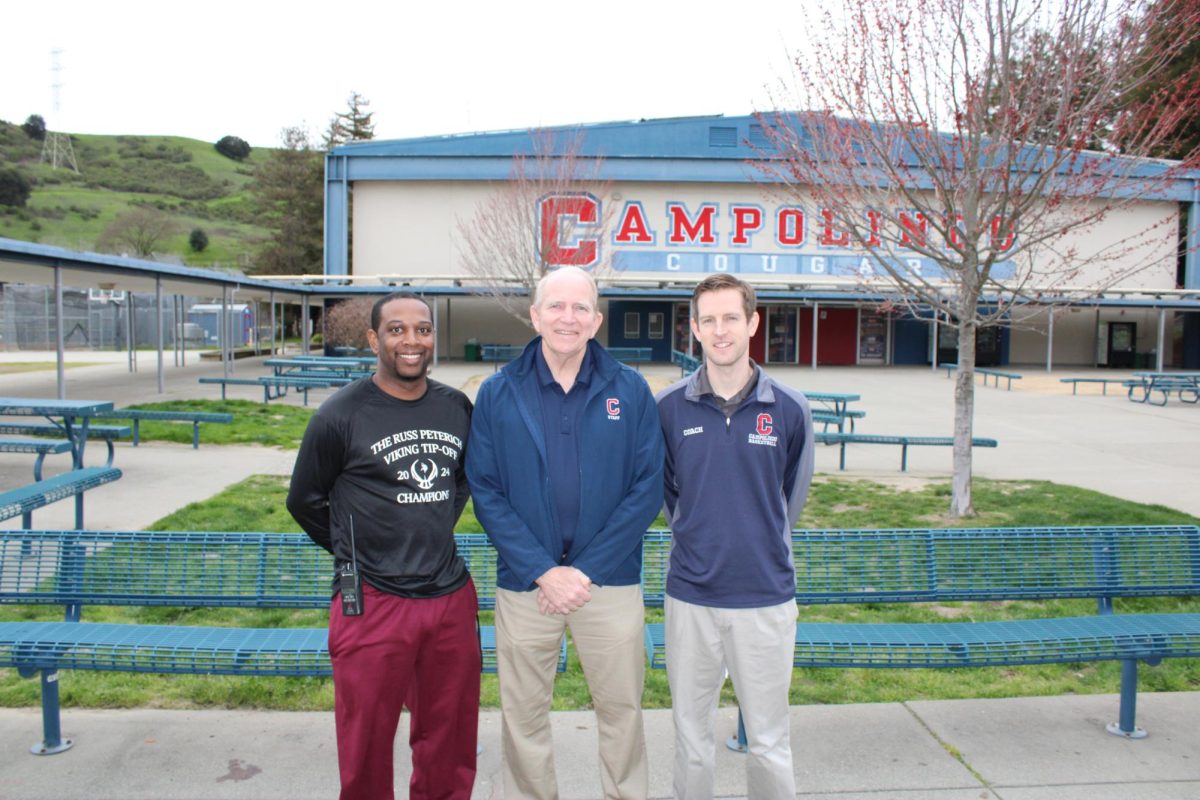The multi-use room and choral building is approximately midway through renovation. The finished structure will feature a new commercial kitchen, chorale and instrumental practice rooms, and a communal social facility. The project began July 2013 and is anticipated to be finished in early summer of 2014, on schedule, in spite of setbacks during construction.
Plans for reconstruction were drawn by the firm Architects and Engineers, and are being carried out by BHM Construction, a company that specializes in school and historical renovations. According to BHM superintendent Kevin Mancuso, workers have encountered several difficulties during construction, such as the need to recalculate plumbing plans. The underground sewage piping was a foot higher than anticipated, so changes were made in order for the downhill flow of the sewage pipes to be steep enough.
There were also some beam and structural fitting problems. “Because the building was built in the ’60’s, it’s pretty much an internal remodel, and, of course, once you open up any walls with something being this old, there’s a lot of unforeseen conditions,” said Mancuso.
Even with these complications, the construction is on schedule. “We started by tearing up the concrete slabs, putting the electric and plumbing underground. We started internal framing, and right now we’re roughing in the electrical and plumbing in the walls, and the ATAC [system], which is heating, venting, and air conditioning,” said Mancuso. The workers have also removed asbestos, a material used for insulation, from the walls.
Mancuso replaced the former superintendent in September.
According to vice principal Sharon Bartlett, this is the last construction project that is a part of Measure E, a bond measure passed by the school district to raise revenue in part for construction.
“When the bond measure went out to be voted on, redoing that building was one of the items on that list, and by voting for the band measure people were basically endorsing the fact that we needed to update these facilities, for them to continue to be an important part of our campus,” Bartlett said.
Bartlett believes that the renovation is long overdue, as the building has remained relatively unchanged since the 1960’s. “The cafeteria itself wasn’t an area that would draw kids. It needed updating; it was just not as attractive or functional as it could be,” she explained. In addition, the stage in the cafeteria was no longer needed due to the induction of the CPAC.
The renovated cafeteria will provide facilities intended for modern students. “There are going to be big screen TVs. There’s going to be beautiful colored wall tiles, sound is going to be moderated nicely. It’s going to be a really attractive space. The kitchen’s going to be a really nice commercial kitchen, which will be able to turn out really good food. Chorale and instrumental will have practice rooms,” said Bartlett.
Due to the unavailability of the cafeteria, performing arts classes have been displaced to various locations. Choir classes are being held in the small gym, which is also used by after school activities like cheerleading and basketball, and the CPAC. Drama and instrumental classes are sharing the CPAC. Although lack of space and storage has been inopportune, the classes sharing the CPAC have a schedule that eliminates conflict.
Johnny Johnson, the instrumental music teacher, is one of the teachers whose classes have been relocated to the CPAC for this year. “All 3 performing arts programs are having to share class room space, so it’s just a little inconvenient, but everybody’s being cooperative and helpful,” said Johnson.
Because the CPAC is being used by performing arts classes, Campo has been unable to use the theater for performances. Both winter concerts were held at Moraga Valley Presbyterian Church, and Drama’s production “We Scene Us” was held at the Town Hall Theatre in Lafayette.
Food service has also been disrupted by the remodeling. “Twice during the day, once before lunch and once before brunch, people go over to Miramonte and they load up the food that’s sold in the front,” said Bartlett.
The construction, although intrusive, is well received by most students. “I’m looking forward to using the cafeteria because it’d be cool to have an indoor space to use,” said freshman Mariah Brown.
However, freshman Anastasya Izmailova would prefer for her Freshmen Band class to stay in the CPAC next year, rather than move back into the cafeteria. She believes that the sound system is better on stage, and that practicing where she plays in concert is beneficial. “It’s much better because you get used to playing on the stage versus having to move everything and getting into a new room where there’s different ways of hearing the music,” she explained.
Sophomore Women’s Ensemble student Natalie Fedorova also believes that the sound is better in the small gym, where her class has been moved. “It’s gotten a lot more echo-y than before, so you can hear yourself better. Personally, I can hear my voice a bit better in the small gym than I could in the old classroom,” she said.
Nevertheless, Izmailova and Fedorova look forward to having a separate practice rooms next year, and they are excited to use the new cafeteria.
While Izmailova and Fedorova are not disturbed by the transition, drama students are feeling crowded in the CPAC, for which they had originally been the only occupants. “We can’t use the main theater to practice and do a lot of stuff because all the musical stuff’s there, so it kind of sucks. It’s definitely made the space smaller,” said senior Kion Karimi, an advanced drama student.
Sophomore Julia Durski, a drama 2 student, agrees. “There’s a whole bunch of stuff from AP Music Theory. Orchestra also takes up space; they have all their stuff onstage. It’s basically overcrowded with different departments, and there’s not enough room for the poor little drama department. Compared to last year, we had so much more space, and the whole CPAC was basically our space,” she said.
Bartlett believes that although the reconstruction is an immense project to undertake, updated facilities are important to more than just the enjoyment of students. “We wouldn’t be able to offer you what I would consider a quality 21st century education if our facilities weren’t keeping pace, and I think our community recognizes that. I think that’s the way, in terms of facilities, we’re able to keep looking ahead and offering an education that’s going to be relevant to you and the future,” she explained.
